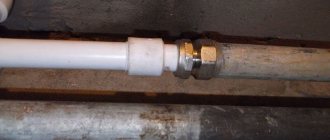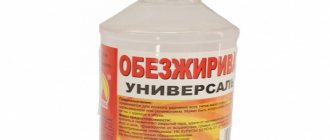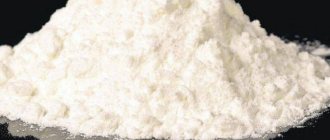- 7 options for switching from HDPE to metal
- Video on how to connect HDPE to steel using quick-release couplings
- Bonus lifehack. We connect the plastic pipe to the metal one using a bottle.
Hello. This article belongs to the category of “frequently asked questions”.
Our customers who successfully use quick-release couplings for plastic pipelines ask the question of how to connect a metal pipe to a plastic one. And also how to attach steel pipeline fittings to a plastic pipe. We'll talk about gate valves in another article, including check valves using our quick-release connections. And in this material we have compiled a selection of the most common methods of connecting metal and plastic pipes.
When is such a connection needed?
The need for connections of this type arises in the following cases:
- connecting to an existing metal (most often cast iron) riser of a polymer liner from a sink, sink, bathtub, etc.;
- installation of steel reinforcement on the HDPE pipeline;
- connection to a system with a high operating temperature, which low-density polyethylene (HDPE) cannot withstand;
- connection to the metal outlet of a garden irrigation system from the house;
- a tie-in into the central highway, the wiring to which passes through an area with increased load. In this place, stronger metal segments are used, and polymer pipes go up to it.
When connecting plastic pipes to metal ones
The pairing of dissimilar pipes in the construction and domestic spheres is carried out:
- When cutting into a steel pipeline transporting water or gas, a polymer branch extending from the tee is often used.
- When laying underground gas pipelines made of polyethylene, when exiting to the top, it is connected to a steel outlet for entering the buildings.
- When replacing damaged sections of a sewer riser or underground sewer line, cast iron sections are replaced with plastic ones, and they are connected using different technologies.
- When replacing steel fragments of water pipes outdoors and indoors with polymer ones.
- In special cases, when one section of the pipeline is located in an area of elevated temperatures or significant loads, it is made of a heat-resistant and durable iron-containing alloy, and then connected to a line made of polymers.
Rice. 2 Metal pipes (steel, galvanized, stainless steel, copper) for use in water supply, heating and sewerage systems
Advantages and disadvantages of such a connection
Preference is given to such a connection due to the unique characteristics and high performance properties of HDPE products. They got their name thanks to the technology of manufacturing polyethylene under low pressure.
Compared to products made from LDPE (high-density polyethylene), HDPE has a higher density and better strength characteristics.
- Like all types of plastic, it is not subject to corrosion and the destructive effects of chemically aggressive substances, and has a smooth surface that allows it to maintain high throughput throughout the entire period of operation.
- It has frost resistance (withstands -50˚) and low thermal conductivity.
- Polyethylene products are lightweight and easy to assemble. They are cheaper than polypropylene pipes and metal-plastic analogues.
- They are used in the water supply system, when laying external water supply to the house, and installing a sewer network.
The disadvantages of HDPE products include intolerance to high temperatures (begins to soften at 80˚). Because of this, it is not recommended for use in heating and hot water supply systems, where it is better to use metal-plastic.
Polyethylene is very susceptible to UV rays, therefore it is recommended only for laying underground, in dark rooms.
This video demonstrates the characteristics of low pressure pipes:
Nature of the connection
Detachable and permanent types of connection of HDPE pipes with metal are the main ones for materials. Both of these options provide reliable grip; each of them has its own advantages and disadvantages that must be taken into account during installation.
The one-piece type of connection of HDPE pipes with compression fittings is made by welding. This method allows you to connect the elements tightly and tightly. It will no longer be possible to separate them. Permanent connections require the use of a special welding machine. Its cost is quite high, which increases the cost of construction and subsequent repairs. If the connection is incorrect, new products should be purchased.
It is no longer possible to work with already used polypropylene pipes to connect the holder. At the same time, there are certain advantages to this method. These materials are suitable for gas supply. In this case, they ensure that there is no gas leakage in the connection areas. Welding and fusion are used to form permanent joints. There are several options for forming such a connection:
- Joint to joint. First, the ends of steel and polypropylene pipes are taken and sent to a special apparatus. He puts them on top of each other and welds them together. It is necessary to solder the surfaces over a certain exposure time and using a specific temperature, otherwise the structure may be damaged.
- Electric coupling. This is a special type of connecting piece made of polyethylene. Inside it has a metal heating coil. It is connected to a special device, as a result of which it begins to warm up under the influence of electric current. The ends of the pipes are connected by a coupling. A permanent connection is formed.
Connection methods
The transition is carried out in two ways:
- detachable (through special adapters in the form of threaded couplings, bends, tees);
- one-piece (using either butt welding or through electric fittings that, when current is applied, can melt the welded surfaces, after cooling which a reliable joint is obtained).
Detachable
Classic threaded connection. Turns are cut into the metal with a die, and a transition fitting is screwed onto them, which has an external or internal thread at one end, and a seat for a plastic element at the other. Today's advanced compression fittings require virtually no tools or equipment for assembly.
Docking using flanges. Used when connecting pipeline fittings made of steel that have a flange or the possibility of welding it. For such connections, a polymer bushing with a separately attached flange was invented. It is put on the sleeve, it is welded to the end of the HDPE pipe. Next, its flange is bolted to a similar part of the connecting element.
The photo shows the bushing:
Flange for sleeve:
One-piece
Based on the welding method of joining components. A distinction is made between butt welding, which is used when connecting pipes and fittings of the same diameter and thickness, and welding through polyethylene-steel electrical adapters using special equipment.
Detachable connections
This is a structure that can be dismantled if necessary. The HDPE pipe is connected with fittings that are leak-tight. They are reusable, so you can connect and disconnect them many times. A positive property of a detachable connection is considered to be beauty in installation. This work does not require the purchase of special equipment. This installation method allows you to save money, since the elements themselves are inexpensive.
If a certain interval needs to be replaced, there is no need to dismantle the entire system. It is enough to remove the damaged area and place a new component there. If the installation was installed correctly, the connection is sealed. It is better to make permanent those areas that are subject to maximum load. There are two types of detachable connections:
- Using compression fittings. This method is one of the most reliable and simple. It is important to secure the coupling to the pipes so that it is firmly installed.
- Socket connection. It is rarely used, since this method does not provide optimal performance. One end of the product should be slightly wider than the other. A separately taken pipe is inserted into the wide end of another with its narrow end. To ensure tightness, special gaskets are placed between these objects. Fitting connections are used most often today.
Diameter standards
The main dimensional parameter of a HDPE pipe is the outer diameter. In accordance with GOST, it is indicated in the labeling of domestic products. The size range is set in a certain sequence, the most used starts from 16 mm and goes up to 110 mm.
When installing yourself, it is important to understand how to combine sections of pipe products made of steel and HDPE. There is a specially designed table of their sizes suitable for each other:
Step-by-step technique for connecting pipes with your own hands
The technology for converting HDPE to metal includes the following stages:
- choosing a connection method;
- determination of section sizes and material lengths;
- purchase of pipes, fittings;
- tool preparation;
- connection installation;
- verification tests.
- necessary tools and materials
The minimum set of tools includes:
- wrenches, adjustable wrenches;
- mites;
- pipe cutter;
- thread cutter;
- welding machine if necessary.
Materials are purchased depending on the volume of work, pipes - taking into account 10% of losses to waste.
Work progress
- Threaded detachable connections begin with the preparation of the steel end: it is cut, aligned, and threaded.
- Then, using a winder, the adapter fitting is screwed on by hand.
- At the other end of the fitting, plastic is installed using a crimp nut.
- Use a wrench to tighten the fitting onto the thread.
Installation features
Polyethylene fittings are used mainly for joining pipes of small sections.
It is important to note that there are adapters with both internal and external threads. Therefore, they are selected depending on the purpose and, naturally, in accordance with the size of the pipes.
A popular fitting for connections of this type has become the so-called “American” coupling, with a steel end and a thread cut on it on one side, and a plastic outlet on the other.
Just a sawn-off polyethylene pipe hardly fits into the sealing ring. You can cut the outer parts of the pipe into a cone with a knife. The product will go in all the way without any problems.
Frequent connection problems and errors
Errors when selecting pipes: a product for cold water was used for the heating system or HDPE products were used for pressure water supply. You should pay attention to product labeling. Colored longitudinal stripes indicate areas of product use: blue - for drinking water, yellow - for gas pipelines, no stripe - for technical water supply.
- Use of HDPE pipes for purposes other than their intended purpose
- Use of low-quality fittings.
- Laying pipelines in areas with heavy loads - under roads, etc.
- Improper use of compression fittings. Often the pipe is inserted into the fitting, resting its end against the rubber ring. It is not right. You need to chamfer the end, as if to give it the appearance of a cone, which will allow you to insert the end of the pipe into this ring and push it in deep until it stops. After tightening the nut, the ring will seal, creating a strong connection.
Expert advice
When installing a metal tap on a HDPE pipe, an effective solution may be to use an electric welded saddle. This is especially suitable for installation under pressure. The saddle is welded to the polyethylene using built-in spirals, and then a hole is drilled in the channel to install the tap.
Threading a steel end is essentially the most difficult stage in installation. To make this labor-intensive process more efficient, it is recommended to alternate moving the thread cutter half a turn forward and moving it back a little. This will save energy and speed up work.
A combination of several pipe joining methods
Special compression adapters combine flange connection and the properties of a compression fitting. At one end they have a regular flange, which is mounted with bolts to the mating flange of the metal pipe, at the other - a compression transition using a crimp nut.
This method is used in networks with small pipes (up to Ø 110 mm).
The photo shows a HDPE compression adapter with a flange:
There are permanent threaded joints in which the thread is used only to fix the segment, and then an additional channel is welded on.
Connection of metal products and HDPE
When working at home, ease of installation is important. The pipes used in such cases have a small diameter. That is why it is permissible to use special fittings - adapters - to connect them.
They are equipped with a polyethylene layer at one end and have a smooth texture. It is to this plane that the HDPE pipe is connected. The second ring has a metal surface and is threaded. A metal pipe is inserted here. This connection is installed in a similar way to installing a compression fitting.
Flange connections are used for large pipe diameters. On the one hand they are made of HDPE, on the other - from metal. The second ring has special holes for bolts.











